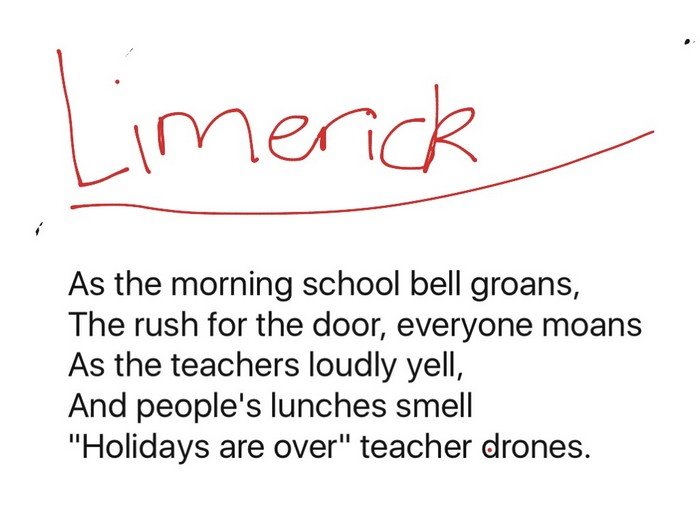In the vast landscape of poetry, where complexity often reigns supreme, there exists a humble form that has captivated readers for centuries with its simplicity and wit. The limerick, with its distinctive rhythm and playful nature, stands as a testament to the power of brevity and humor in the realm of verse. In this comprehensive exploration, we delve into the origins, structure, and enduring appeal of the limerick, uncovering the magic behind its seemingly effortless charm.
Origins and Evolution
The roots of the limerick can be traced back to the early 18th century, where it emerged as a popular form of humorous verse in England and Ireland. Its name is believed to be derived from the Irish city of Limerick, although its exact origins remain shrouded in mystery. What is clear, however, is that the limerick found fertile ground in the vibrant culture of pubs and taverns, where it was often recited and improvised by patrons seeking to entertain one another.
Over time, the limerick underwent various transformations, adapting to different cultural contexts and linguistic nuances. It spread across the globe, gaining popularity in countries as far-flung as the United States, Australia, and New Zealand. Along the way, it absorbed influences from other poetic traditions, incorporating elements of satire, nonsense, and even bawdy humor.
Structure and Form
At its core, the limerick is defined by its distinctive structure, characterized by five lines and a strict rhyme scheme. The first, second, and fifth lines typically rhyme with one another, while the third and fourth lines form a separate rhyming couplet. In terms of meter, limericks traditionally adhere to anapestic trimeter, with three metrical feet in the first, second, and fifth lines, and two metrical feet in the third and fourth lines.
Consider the following example:
There once was a man from Peru (A)
Who dreamt he was eating his shoe (A)
He awoke with a fright (B)
In the middle of the night (B)
To find that his dream had come true (A)
Here, the rhyme scheme (AABBA) and meter (da-da-DUM, da-da-DUM, da-da-DUM) conform to the classic limerick structure, lending the poem its distinctive cadence and rhythm.
Themes and Variations
Despite its simple form, the limerick has proven to be remarkably versatile, accommodating a wide range of themes and subject matter. While many limericks are lighthearted and humorous in tone, others explore more serious or contemplative themes, demonstrating the form’s capacity for depth and nuance.
One popular variation of the limerick is the “dirty limerick,” which trades in innuendo and risqué humor. While these poems may not be suitable for all audiences, they nevertheless represent an important aspect of the limerick tradition, showcasing its ability to push boundaries and challenge social norms.
In addition to thematic variations, the limerick has also inspired countless experimental forms and adaptations. From double limericks to reverse limericks to limericks with irregular meter, poets have continually pushed the boundaries of what is possible within the constraints of the form, demonstrating its enduring appeal and flexibility.
The Art of the Limerick
Crafting a successful limerick requires a delicate balance of wit, rhythm, and wordplay. While the form’s strict structure may seem limiting at first glance, it also provides a framework within which poets can unleash their creativity and imagination.
One of the key challenges of writing a limerick lies in finding the right balance between humor and coherence. A successful limerick should be funny and engaging, but it should also tell a coherent story or convey a clear idea. Achieving this balance often requires careful attention to both form and content, as well as a willingness to experiment with language and rhyme.
Another important aspect of the limerick is its emphasis on sound and rhythm. Because the form relies heavily on rhyme and meter, poets must pay close attention to the musicality of their verses, ensuring that each line flows smoothly and harmoniously with the rest of the poem. This can be achieved through careful selection of words, as well as strategic placement of stressed and unstressed syllables.
Conclusion
In conclusion, the limerick stands as a shining example of poetry’s ability to delight and entertain. From its humble origins in the taverns of 18th-century England to its enduring popularity in the digital age, the limerick has captivated readers and poets alike with its simplicity, wit, and charm. By exploring its origins, structure, and thematic variations, we gain a deeper appreciation for the artistry and craftsmanship that underpin this beloved poetic form. So the next time you find yourself in need of a laugh or a moment of levity, look no further than the humble limerick, and prepare to be enchanted by its timeless magic.

